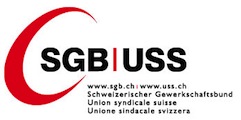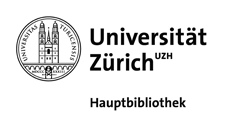Publications des institutions partenaires
Three essays on firms' exposure to common risks
Institution partenaire
English / 01/01/2017
Essays on transfer pricing, taxes and corporate sustainability performance
Institution partenaire
English / 01/01/2017
The liquidity advantage of the quote-driven market: Evidence from the betting industry
Even though betting exchanges are considered to be the superior business model in the betting industry due to less operational risk and lower information costs, bookmakers continue to be successful.We explain the puzzling coexistence of these two market structures with the advantage of guaranteed liquidity in the bookmaker market. Using matched panel data of over 1.8 million...
Institution partenaire
English / 01/01/2017
The impact of government subsidies in professional team sports leagues
This article develops a game-theoretical model to analyze the effect of subsidies on player salaries, competitive balance, club profits, and welfare. Within this model, fan demand depends on win percentage, competitive balance, and aggregate talent. The results show that if a large market club receives a subsidy and fans have a relatively strong preference for aggregate talent,...
Institution partenaire
English / 01/01/2017
Who is attracted by teamwork? Evidence of multidimensional sorting from a real-effort experiment
We analyze the factors that drive an individual’s self-selection decision between (1) working individually and being paid for individual performance and (2) working on a team and being paid for team performance. While the literature has focused on task specific ability as a self-selection criterion, we also investigate the effects of teamwork skills, expectations concerning the task...
Institution partenaire
English / 01/01/2017
Commission of Experts for Research and Innovation - 2017 "Research, Innovation and Technological Performance in Germany"
Institution partenaire
English / 01/01/2017
Combining knowledge stock and knowledge flow to generate superior incremental innovation performance - Evidence from Swiss manufacturing
Firms generate new knowledge that leads to innovations by recombining existing knowledge sources. A successful recombination depends on the availability of a knowledge stock (human capital pool) and the flow of knowledge within the firm (induced by HRM systems). While human resource theory expects complementarities between human capital pools and HRM systems, it does not explicitly...
Institution partenaire
English / 01/01/2017
Do research training groups operate at optimal size?
In this paper, we analyze whether structured PhD programs operate at optimal size and whether there are differences between different disciplinary fields. Theoretically, we postulate that the relation between the size of a PhD program and program performance is hump shaped. For our empirical analysis, we use hand-collected data on 86 Research Training Groups (RTGs) funded by the...
Institution partenaire
English / 01/01/2017
The circular unitary ensemble and the Riemann zeta function: the microscopic landscape and a new approach to ratios
We show in this paper that after proper scalings, the characteristic polynomial of a random unitary matrix converges to a random analytic function whose zeros, which are on the real line, form a determinantal point process with sine kernel. Our scaling is performed at the so-called “microscopic” level, that is we consider the characteristic polynomial at points whose distance to $1$...
Institution partenaire
English / 01/01/2017
Skills, personal characteristics, and labor market transitions
Institution partenaire
English / 01/01/2017
Different educational structures and their economic impact on individuals and the economy
Institution partenaire
English / 01/01/2017
Analysing the sensitivity of nestedness detection methods
Many bipartite and unipartite real-world networks display a nested structure. Examples pervade different disciplines: biological ecosystems (e.g. mutualistic networks), economic networks (e.g. manufactures and contractors networks) to financial networks (e.g. bank lending networks), etc. A nested network has a topology such that a vertex’s neighbourhood contains the neighbourhood of...
Institution partenaire
English / 01/01/2017
The Computational Complexity of Clearing Financial Networks with Credit Default Swaps
Institution partenaire
English / 01/01/2017
Characteristics of project-based alliances: evidence from the automotive industry
As organisational governance has evolved from hierarchical structures to relational networks, project-based alliances are increasingly employed by automakers as part of their innovation strategy. In this study, we explore characteristics of different types of project-based alliances in the automotive industry. Employing dyadic data drawn from 59 new product development project-based...
Institution partenaire
English / 01/01/2017
Reward, value, and salience
Value and salience are key variables for associative learning, decision-making, and attention. In this chapter we review definitions of value and salience, and describe human neuroimaging studies that dissociate these variables. Value increases with the magnitude and probability of reward but decreases with the magnitude and probability of punishment, whereas salience increases with...
Institution partenaire
English / 01/01/2017
How does risk flow in the credit default swap market?
Institution partenaire
English / 22/12/2016
Did declining social mobility cause Trump’s rise? In a word, no.
Institution partenaire
English / 09/12/2016
Funding shocks and banks' credit reallocation
This paper provides evidence on the strategic lending decisions made by banks facing a negative funding shock. Using bank-firm level credit data, we show that banks reallocate credit within their domestic loan portfolio in at least three different ways. First, banks reallocate to sectors where they have high sector presence. Second, they also reallocate to sectors in which they are...
Institution partenaire
English / 06/12/2016
Dynamical representation of dominance relationships in the human rostromedial prefrontal cortex
Humans and other primates have evolved the ability to represent their status in the group's social hierarchy, which is essential for avoiding harm and accessing resources. Yet it remains unclear how the human brain learns dominance status and adjusts behavior accordingly during dynamic social interactions. Here we address this issue with a combination of fMRI and transcranial...
Institution partenaire
English / 05/12/2016
Pages
Le portail de l'information économique suisse
© 2016 Infonet Economy












